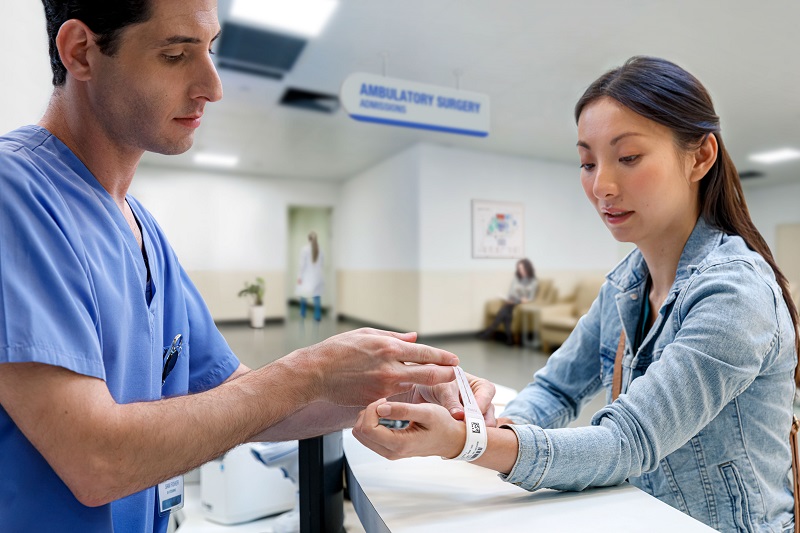With the coronavirus pandemic, there is no certainty.
As the UK loosens restrictions, with restaurants, pubs, cinemas and more now re-opening, there’s a temptation to think that a great hurdle has been overcome and that life can continue on its trajectory back to normality.
In a period of unprecedented change, it’s vital that temporary hospitals and healthcare workers are equipped with the tools to cope with whatever increase of demand is placed upon them
But a second wave remains a daunting possibility and temporary hospitals, therefore, are not just a handy safety net, but an absolute necessity in the continued fight against this pandemic.
So how can we ensure that the UK’s Nightingale hospitals, built to cope with the surge of cases, can handle a potential second wave?
In a period of unprecedented change, and probably the busiest time for the healthcare community in living memory; it’s vital to ensure that temporary hospitals and healthcare workers are equipped with the tools to cope with whatever increase of demand is placed upon them.
Mobilising operations can play a huge part in increasing efficiency in temporary hospitals, helping frontline workers to handle the increased number of patients, and better arm them.
Changing times
With the number of infected patients placing greater demand on the healthcare industry, and patients with non-COVID-19 ailments asked to stay away, healthcare practices and processes must now be reviewed.
Pre-COVID-19 readiness is no longer enough, and striving to maintain the status quo when the status quo doesn’t exist is a recipe for disaster.
Pre-COVID-19 readiness is no longer enough, and striving to maintain the status quo when the status quo doesn’t exist is a recipe for disaster
As a result, temporary hospitals must review their technology adoption to ensure they are ready to handle the volume of patients, while also having the ability to share data with government agencies as quickly as possible to support decision making around public safety.
Thankfully, mobile technologies can ensure both of these boxes are ticked.
Indeed, arming staff with mobile technology, like disinfectant-ready android devices, can help them handle higher quantities of patients, allowing them to collaborate, receive and act on real-time patient monitoring alerts, track the use of critical assets, and verify patient identities and health statuses to ensure accurate treatment.
Mobile technologies, from barcode scanners; mobile printers to tablets, can drive the more-reliable, accurate and efficient capture and sharing of data in temporary hospitals – the importance of which cannot be understated.
Capture data, save lives
Even prior to the current situation, the ability to efficiently and accurately capture, share and use data to its maximum benefit was a key factor in helping clinicians and medical staff meet the global demand for healthcare services.
Now, with that demand reaching unprecedented heights – the UK’s peak in April resulted in daily hospital admissions of around 3,000 people, according to NHS England – the value of information has soared to even greater heights.
Put simply: in the fight against the pandemic, action can only be taken depending on the information we have available to us.
As a result, global leaders, healthcare providers and scientists are in a race against time to gather data.
Poor data capture has been hindering medical professionals since long before the pandemic
However, poor data capture has been hindering medical professionals since long before the pandemic.
Many European hospitals still record essential patient data in hand-written form, and even during the early stages of the COVID-19 outbreak, manual ‘clipboard’ processes were being used to capture data and create specimen labels.
It would be an understatement to say this is less than ideal, with human error easily creeping in during times of great demand.
Patients being administered the wrong medicine is just one of the many disastrous outcomes of poorly-captured data.
Mobilisation is helping to curtail this and, in temporary hospitals, the use of handheld mobile computers, barcode scanners and tablets is ensuring data capture is reliable.

Temporary COVID-19 field hospitals need to review their technology adoption to ensure they can handle an increased volume of patients
These technologies can allow healthcare workers in temporary hospitals to automate critical workflow actions such as contactless positive patient identification, referral confirmation, and electronic health record updates, and even generate properly-coded specimen labels using mobile printers.
This will help with the collection and processing of COVID-19 tests and reduce the risk of errors when updating patient records, labelling specimens, or reporting results.
It’s imperative that healthcare providers have the right systems in place as we move to the next phase of public testing, and mobilisation can play a key role in this
This is important for current treatment, enabling staff to handle more patients in a safer and more-efficient manner, and it can allow medical professionals to share important information with government bodies in almost real time.
In the near term, it’s imperative that healthcare providers have the right systems in place as we move to the next phase of public testing, and mobilisation can play a key role in this.
The mobilisation of temporary hospitals can increase efficiency and improve care for those afflicted with the virus, and in enabling healthcare frontline workers to capture and share vital data, make a telling contribution in the ongoing battle against COVID-19.
